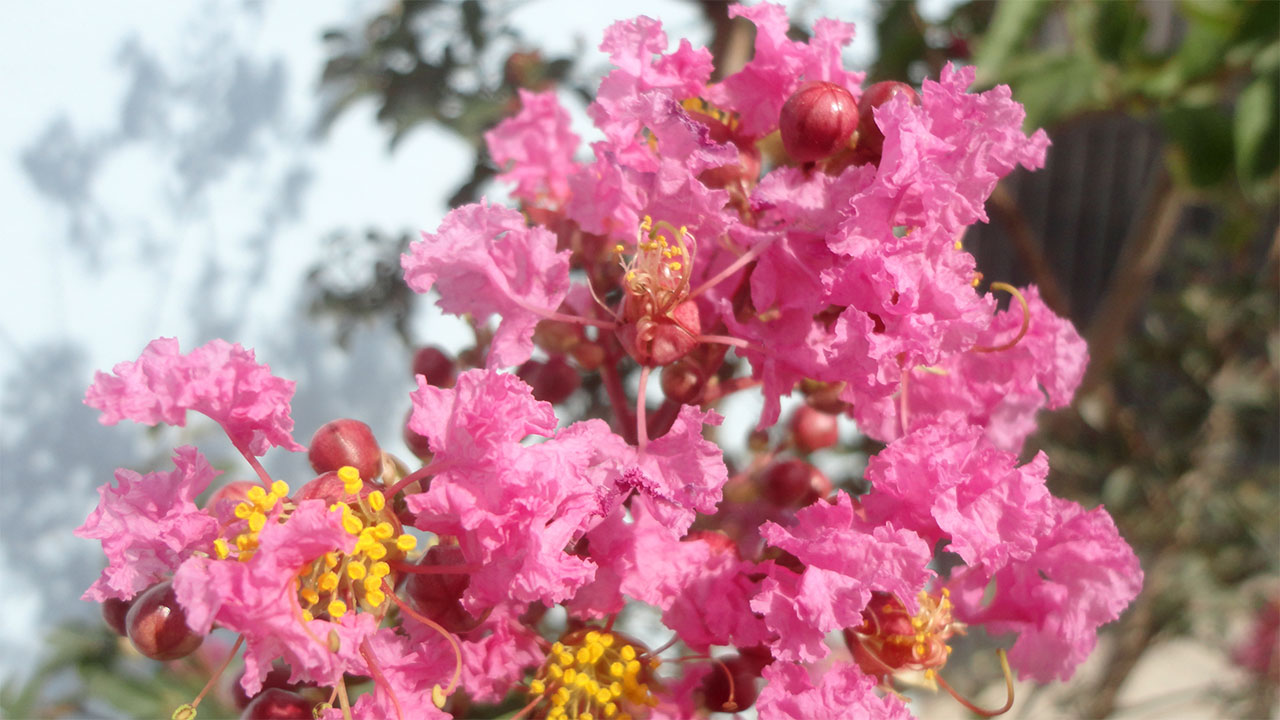Crepe myrtles (Lagerstroemia) are native to Southeast Asia, including regions such as China, Korea, and Japan.
The botanical name comes from Magnus von Lagerström, a Swedish merchant and director of the Swedish East India Company, who provided Carl Linnaeus with plant specimens from East Asia. Linnaeus, in turn, named the genus in honor of Lagerström.
Known for their vibrant and long-lasting summer blooms, come in various types, including dwarf, medium, and tall varieties, each offering unique landscaping uses.
Dwarf crepe myrtles, which reach heights of 2-5 feet, are perfect for small gardens, container planting, or as colorful ground covers.
Medium-sized varieties, growing between 6-15 feet, serve well as striking hedge plants or standalone focal points in garden beds.
Tall crepe myrtles, soaring over 20 feet, are often used as ornamental shade trees or to line driveways and streets, providing both aesthetic appeal and practical shade.
These crepe myrtles can be pruned to maintain desired shapes, adding versatility to various landscape designs, and their beautiful peeling bark provides winter interest.
They thrive in hot climates and are highly drought-resistant once established, making them suitable for regions with harsh summer conditions.
Their ability to withstand poor soil and pollution also makes them a hardy choice for urban environments.
Furthermore, crepe myrtles attract pollinators like bees and butterflies, contributing to the health and biodiversity of the garden ecosystem.
Discover Beautiful Flowers, Expert Gardening Tips & Interesting Plant Science!
By submitting this form, you are consenting to receive marketing emails from: . You can revoke your consent to receive emails at any time by using the SafeUnsubscribe® link, found at the bottom of every email. Emails are serviced by Constant Contact

About The Author
John Bagnasco has been in the gardening industry for over 50 years, starting with a horticulture degree from Michigan State University and following a stint at Frank’s Nursery and Crafts in Detroit.
After publishing his first book “Plants for the Home Vol. I” in 1976, he moved to California to become regional manager and buyer for the Nurseryland division of Sunbelt Nursery Group.
He then became the head buyer for Armstrong Garden Centers based in Glendora, California. John had a part-time affiliation with Creative Promotions for ten years before joining them full-time in October 2000 as a senior editor and radio personality for Garden Compass.
John has also taught horticulture classes at Palomar College and San Diego State University.
He is the host of the DVD “The Essential Guide to Roses,” which also features Bryan Main and Bruce and Sharon Asakawa.
His most recent book is “Planting Designs for Cacti and Succulents”.
Currently, John is a co-host on “Garden America,” an interactive live gardening show that additionally provides podcasts of the broadcasts accessible on all major platforms.
You can contact John here.

